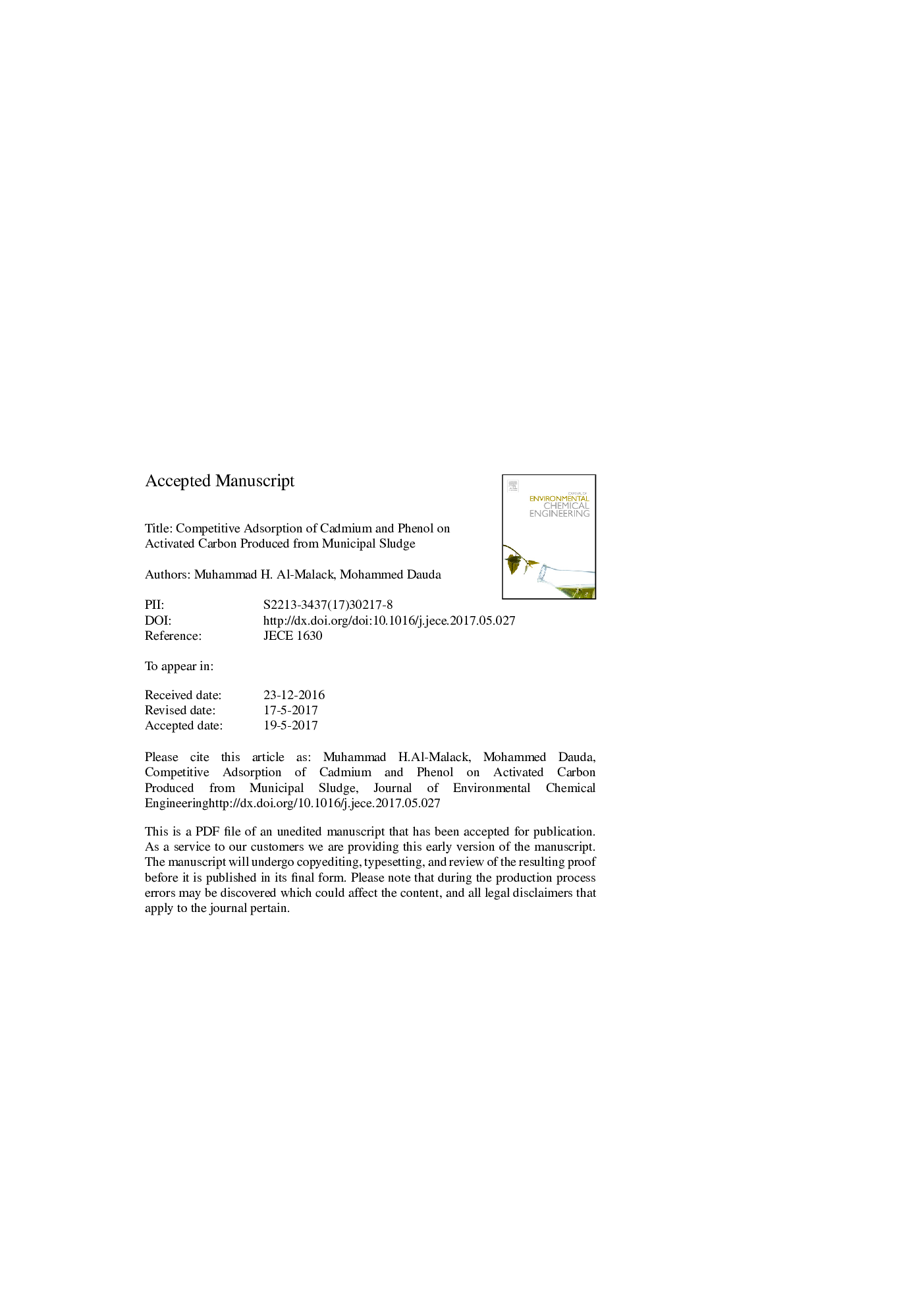| Article ID | Journal | Published Year | Pages | File Type |
|---|---|---|---|---|
| 4908416 | Journal of Environmental Chemical Engineering | 2017 | 43 Pages |
Abstract
Competitive adsorption of Cadmium (Cd2+) and phenol from binary aqueous solutions were investigated using activated carbon (AC) produced from municipal sewage sludge. The produced AC was characterized using different techniques that included Fourier Transform Infrared Spectroscopy (FTIR), Scanning Electron Microscopy (SEM), X-ray Diffraction (XRD) and Porosity and Surface Area Analysis. The results showed that produced AC samples had a specific surface area of 319.5 m2/g when 5.0 M ZnCl2 was used as the activating agent at activation temperature and time of 700 °C and 60 min, respectively. Effects of various operational parameters such as initial pH, initial concentration, adsorbent dosage and contact time were investigated. The produced AC was found to have higher affinity to phenol than Cd2+, where removal efficiencies of 28 and 53% for Cd2+ and phenol, respectively, were achieved from binary solutions at optimum conditions of pH (5.5), AC dosage (0.15 g/50 mL) and contact time (120 and 480 min for Cd2+ and phenol, respectively). Experimental data on adsorption of Cd2+ and phenol was found to best fit the Freundlich isotherm model. Moreover, adsorption mechanism of both components was attributed to chemisorption, which was demonstrated by the equilibrium data that best fitted the pseudo-second order kinetic model.
Related Topics
Physical Sciences and Engineering
Chemical Engineering
Chemical Engineering (General)
Authors
Muhammad H. Al-Malack, Mohammed Dauda,
